Catalog
Search
436 products
View:
- Selected: 1Areas of use
- Selected: 0Item names
- Selected: 0Manufacturer
- Selected: 0Made in
- Selected: 0Additional
View:
436 products
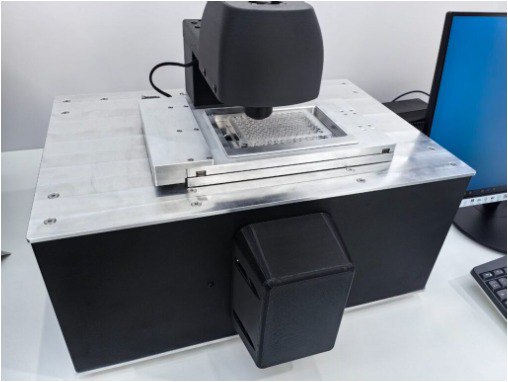
Automated VerumSight Fluorescence Microscope (Fluo)
1 supp.
This laboratory equipment for research purposes allows you to obtain fluorescent images of micro-preparations on slides or in a 96-well tablet in automatic scanning mode.
It has high performance and allows you to automate microscopic studies to save researchers time when routinely obtaining a large number of fluorescent images.
Abisens
Sirius
Produced in: Krasnodar region

High-sensitivity HICMOS digital Camera
1 supp.
The highly sensitive HICMOS digital camera manufactured by Abisens LLC is used to register weak light signals, including bioluminescence, in real time, with a photon counting function and visualization of the signal accumulation process in real time (you do not need to wait for the end of the exposure time to see the light signal accumulated by this moment).
It is used as a component of high-tech laboratory equipment for scientific research, including installation in the fluorescence and bioluminescence imaging System in LumoTrace® biological samples manufactured by Abisens LLC.
Abisens
Sirius
Produced in: Krasnodar region
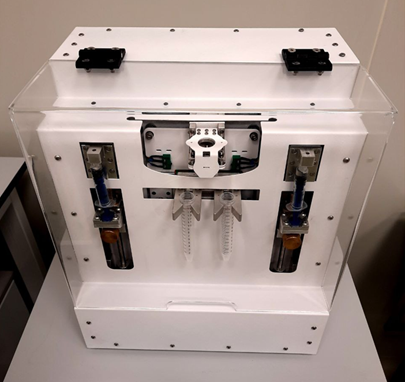
RNA Vaccine production System
1 supp.
It allows the generation of lipid particles for their subsequent use in the creation of RNA vaccines.
The Russian equivalent of Nanoassembler systems.
Abisens
Sirius
Produced in: Krasnodar region
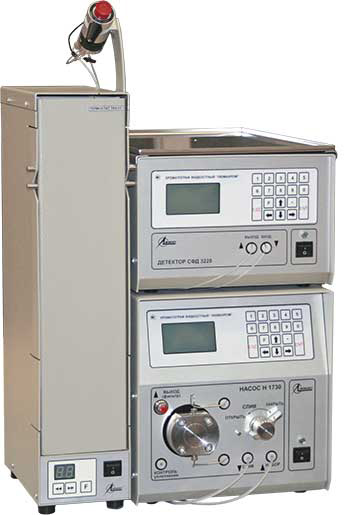
Liquid chromatograph "LUMACHROM®"
1 supp.
Technical specifications:
Operating spectral range, nm from 190 to 360
Limits of permissible absolute error of wavelength setting, nm ± 5
Detection limit of anthracene (wavelength 252 nm), ng/cm3, no more than 1
The limit of the permissible value of the relative mean square deviation of the output signal (n =5), %
of the retention
time over the peak area of 1.5
2
Limits of the permissible value of the relative change in the output signal (peak area) for 4 hours of continuous operation, % ± 5
Overall dimensions (LxWxH), mm, no more:
270x420x190
Weight, kg, not more than 9.5
Power consumption, V· A, not more than 50
Lumeks
Saint Petersburg
Produced in: Saint Petersburg
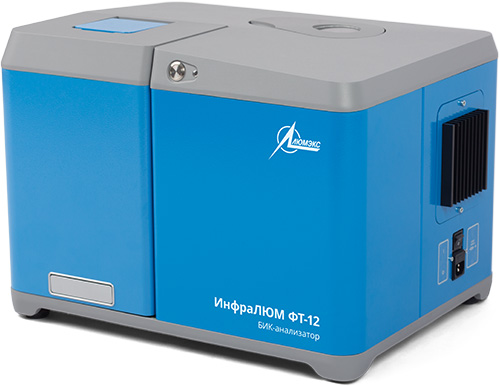
Infrared analyzer "InfraLUM® FT-12"
1 supp.
Technical specifications:
Measurement time, 80 seconds
Standard sample volume in a cuvette, 50 ml
Spectral range, cm-1 from 8700 to 13200
Spectral resolution, cm-1, no more than 10
The limit of the permissible value of the absolute error of the wave number scale, cm-1
±0,5
Analyzer warm-up time, min, no more than 30
Continuous operation time of the analyzer, h, at least 8
Overall dimensions, mm, no more than 530x450x380
Weight, kg, not more than 32
Power supply of analyzers from the AC network: AC power
supply voltage, V
frequency, Hz
(220 ±22)
(50 ±1)
Power consumption, V× A, not more than 110
Average time to failure, h, not less than 2500
Lumeks
Saint Petersburg
Produced in: Saint Petersburg
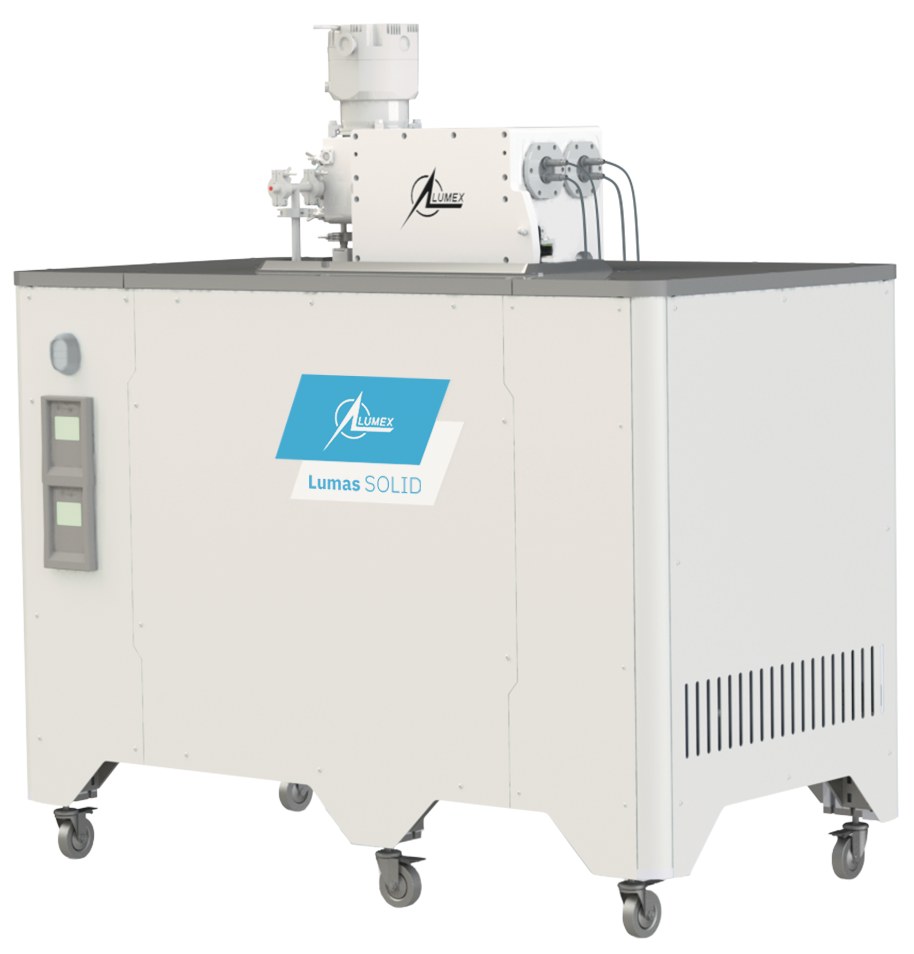
Mass spectrometer for the analysis of solid-phase samples "Lumas GAS"
2 supp.
from
218.11 ₽
Technical specifications:
Ionization method Glow discharge plasma
Discharge gas Air
Time-of-flight Mass Analyzer with mesh-free ion mirror
Resolution 4000
The number of simultaneously defined components is not limited
Mass range 1-1000 m/z Detection limits 10-100 ppt
Analysis time 1-3 min Vacuum system 1 Booster pump and 2 TMN (240 l/sec)
Overall dimensions 1450×780×1550 mm
Lumeks
Saint Petersburg
Produced in: Saint Petersburg
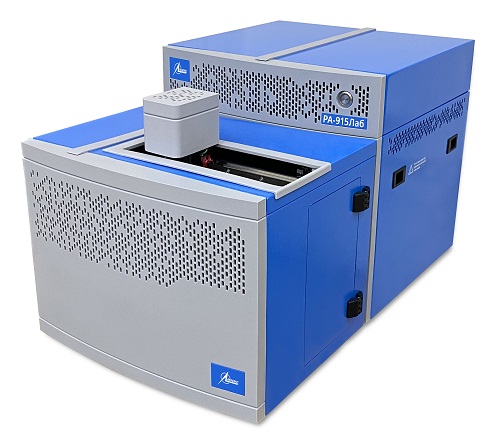
Laboratory mercury analyzer "RA-915Lab"
1 supp.
Technical specifications:
Measuring range 0.5–500 ng
Sample dispenser capacity 5000 mg / 2800 ml
Analysis time 1-5 min
Operating temperature range with software control 50-950 °C with software control
The capacity of the autosampler is 45 samples
Power supply 220 ± 22 V, 50 ± 1 Hz Dimensions (LxWxH), no more:
with autosampler
without autosampler
450x840x460 mm
450x490x460 mm
Weight, no more:
with autosampler
without autosampler
57 kg
40 kg
Lumeks
Saint Petersburg
Produced in: Saint Petersburg
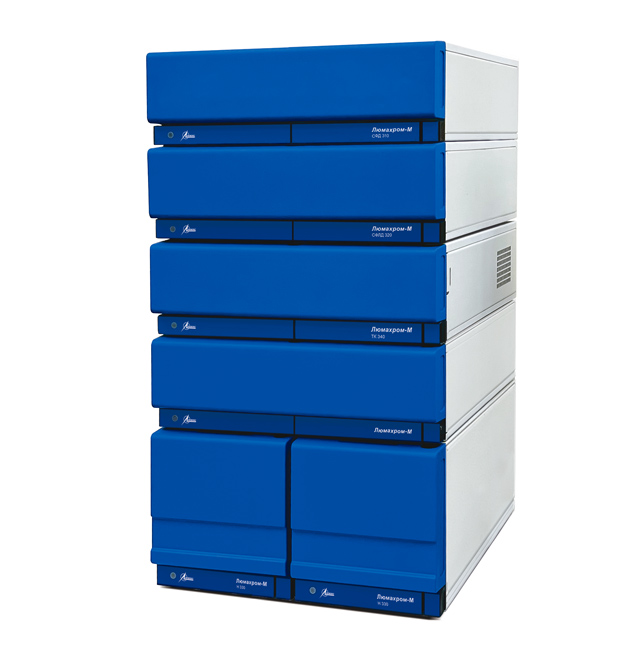
Liquid chromatograph "Lumachrom-M"
1 supp.
The liquid chromatograph "Lumachrom-M" provides maximum automation of the analysis. The device is controlled using specialized software, which in combination with the continuous eluent supply mode and the autosampler gives the maximum level of autonomy of operation. In addition, such a solution minimizes labor costs and the influence of the human factor.
The unique design solutions of the chromatograph provide continuous pulsation-free flow of the mobile phase in both isocratic and gradient modes, as well as the ability to work with any column sizes. Thanks to the improved technical characteristics on the Lumachrom-M device, it is possible to implement a wider list of techniques and GOST compared to previous models.
Lumeks
Saint Petersburg
Produced in: Saint Petersburg
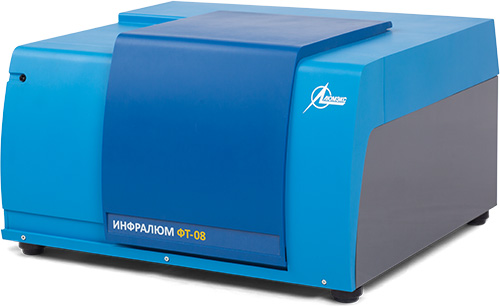
Infrared Fourier spectrometer "InfraLUM® FT-08"
1 supp.
Technical specifications:
Operating spectral range, cm-1 from 400 to 7800
Spectral resolution, cm-1, not more than 0.7
The limit of the absolute error of the wavenumber scale, cm-1 ± 0.05 Signal-to-noise ratio (RMS) for the wavenumber 2150 cm-1, determined in the range ± 50 cm-1 for a resolution of 4 cm-1 and an accumulation time of 60 s, at least 40,000 The limit of deviation of the 100% transmission line from the nominal values for the wave number 2150 cm-1, determined in the range ± 50 cm-1, %
± 0.2
The level of positive and negative pseudo-scattered light caused by the nonlinearity of the photodetector system, % ± 0.25
The time of setting the operating mode of the spectrometers, h, no more than 2
Continuous operation time of spectrometers, h, not less than 8
Power consumption, In × A, not more than 65
Overall dimensions, mm, not more than 580x550x340 Weight, kg, not more than 32 Average time to failure, h, not less than 2500
Average service life of the spectrometer, years, at least 5
Lumeks
Saint Petersburg
Produced in: Saint Petersburg

Mercury analyzer "RA-915M"
1 supp.
Technical specifications:
Measuring range of mass concentration of mercury vapors in the air, ng/m3 from 20 to 20000
Limits of permissible basic relative error, d0, % ± 20
The limit of permissible relative standard deviation of the analyzer output signal, %5
The limit of the permissible value of the mean square deviation (SKO) of the zero signal, ng/m3 2
Drift of the zero signal of the analyzers in 5 minutes, ng/m3, no more than 2
The limit of permissible change of analyzer readings for 8 hours in fractions of d0 0.5
Time to establish the readings, s, no more than 20
Time of analyzer output to the mode, min, no more than 20
Volumetric flow rate of the analyzed air at the analyzer inlet, dm3/min, not less than 10
Volumetric air flow at the outlet of the gas analyzer system
with the inlet blocked, dm3/min, not more than 0.3
Absorption coefficient of mercury vapor by the built-in sorption filter, %, not less than 98
The limit of permissible additional error due to changes in ambient temperature within the operating range for every 10 ° C, in fractions of d0 0.5
The analyzers are powered by a built-in AC battery voltage (220 ±22) In the frequency
(50 ±1) Hz
Power consumption, In × A, not more than 35
Continuous operation time of the analyzers from the built-in battery, h, at least 8
Overall dimensions of the analyzers, mm, no more than 470x110x220
Mass of analyzers, kg, not more than 7
Reliability indicators
average time to failure, h, at least
the full average life from the built-in AC battery voltage (220 ± 22) In the frequency
(50 ±1) Hz
Power consumption, In × A, not more than 35
Continuous operation time of the analyzers from the built-in battery, h, at least 8
Overall dimensions of the analyzers, mm, no more than 470x110x220
Mass of analyzers, kg, no more than 7
Reliability indicators
average time to failure, hours, at least
full average service life, years, at least 2500
Lumeks
Saint Petersburg
Produced in: Saint Petersburg
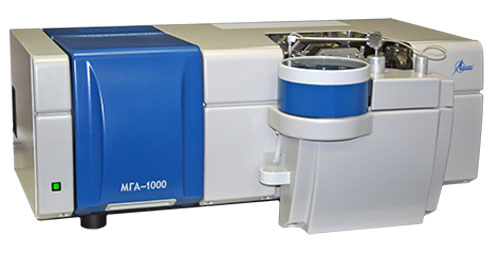
Atomic absorption spectrometer "MGA-1000"
1 supp.
Technical specifications:
Operating spectral range, nm from 190 to 900 Spectral resolution, nm, no more:
- in the range from 190 to 600 nm inclusive
- in the range over 600 to 900 nm inclusive 2
3
Limit of detection of manganese, pg, no more than 3
Nickel detection limit, pg, no more than 20
The time of setting the operating mode of the spectrometers, min, no more than 15 The time of continuous operation of the spectrometers, h, no less than 8
The spectrometers are powered by a three-phase alternating current network:
- rated supply voltage, V
- frequency, Hz 380 (50 ±1)
Overall dimensions of the spectrometer, mm, no more than 800 x 475 x 310
Mass of the spectrometer, kg, no more than 50 Power consumed by spectrometers, kV * A, no more:
- in standby modes and settings of analytical parameters
- in atomization and purification modes 0.1
6 Average time to failure, h, not less than 4000
Lumeks
Saint Petersburg
Produced in: Saint Petersburg
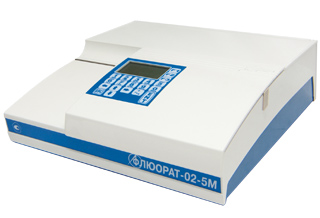
Liquid analyzer "FLUORAT®-02-4M"
1 supp.
Technical specifications:
Limit of detection of the control substance (phenol) in water, mg/dm3, not more than 0.005
Measurement range of the mass concentration of the control substance (phenol) in water, mg / dm3 from 0.01 to 25
Measurement range of the directional transmission coefficient, % from 5 to 100
Limits of permissible absolute error of measurements of the directional transmission coefficient, % ±2 Warm-up time, min, not more than 30 Continuous operation time, h, not less than 8
Overall dimensions, mm, no more than 305x320x110
Weight, kg, not more than 6.5
AC power supply:
- AC power supply voltage, V
- frequency, Hz (220 ±22)
(50 ±1) Power consumption, V× A, no more than 36 Operating time for failure, h, no less than 2500
Lumeks
Saint Petersburg
Produced in: Saint Petersburg
